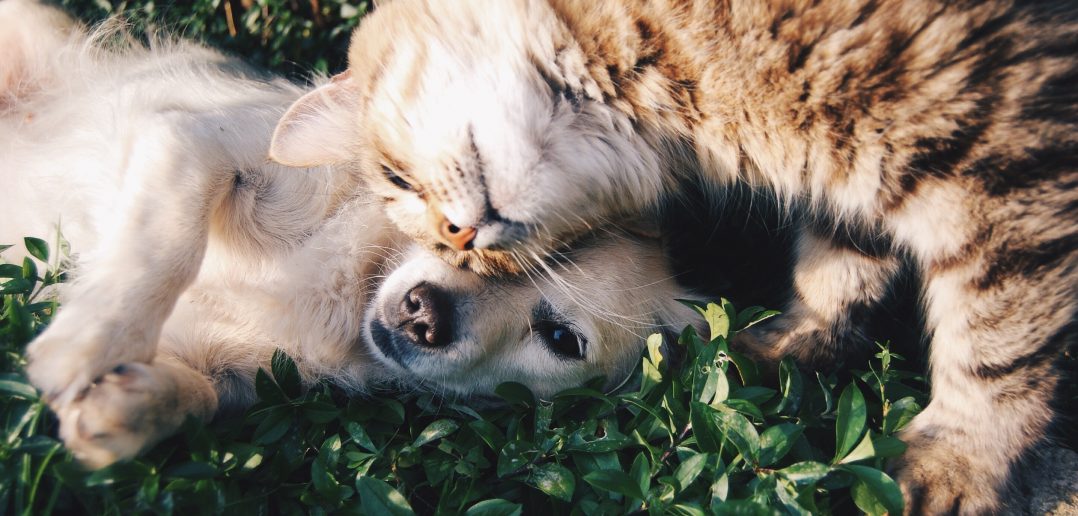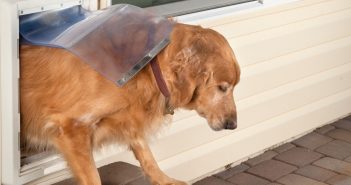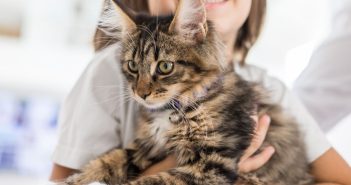One of the worst days I have experienced was when my 6-year-old dog got into a bottle of my prescription medication and subsequently had to be rushed to an emergency veterinarian for a stomach pump. Loopy, but lucky, she survived the ordeal. Since then I have been far more cautious about pet proofing my home.
Whether you are bringing a new furry friend home, or you have lived with them for a while, it’s always a good idea to establish an effective pet proofing procedure to ensure they stay safe.
If you share your home with a dog, or a cat, or both, you’re bound to butt heads with your animals at some point. Since cats are notoriously curious and dogs can be quite clumsy, pet proofing your home is the best way to ensure they stay safe in the areas you share. Below are the top 5 places to focus on before leaving your animals alone.
Bedroom
For the most part, the bedroom can be seen as one of the safest places in your home for your animals. However, there are still plenty of things in your bedroom that can cause them harm. As a general rule of thumb, keep everything that could potentially harm your fur babies up and out of reach, but here are some specifics to look for when you’re pet proofing your bedroom:
- Hide or secure any cords that small paws could get to and mistake for toys.
- Keep your shoes in your closet with your closet door shut. *check that your pets are not inside your closet before closing the door!
- Check drawers before closing them in case you furry friend tried to curl up inside one.
- Keep blankets free of hanging strings that can damage a cats digestive tract.
Bathrooms/Laundry Rooms
The bathroom has the potential to be one of the most dangerous places in your home. Toilet bowls are tempting for Fido, as they provide fresh water and a swirling show that is sure to attract even the most docile pets. This poses a problem for puppies and kittens who could potentially drown in the shallow water. A number of toxic cleaners can also be found in toilet bowls, and should not be easily accessible to small (and big) animals.
The bathroom and laundry room are filled with medications, detergents, cleaners, deodorizers, and other chemicals that can cause serious harm to small stomachs. Be sure to keep all of these out of reach of your furry friends. Pet-proofing these rooms is very important!
- Keep razors out of reach of animals. The blades can cause serious injury to your pet if they swallow or play with them.
- Check for small areas that your animals could crawl into: cabinets, washer, dryers,etc.
- Before turning on your washer or dryer make sure that your pet hasn’t jumped into them.
- Childproof latches can keep curious paws from opening cabinets.
- Place medication, cleaners, and other chemicals on high shelves or locked in childproofed cabinets. Keep laundry detergent, laundry sheets, and lint out of reach of your pets.
Kitchen
The kitchen can be another dangerous place for animals. Cats jumping up onto countertops and tables can give them access to food and utensils that they should avoid. Kitchen detergents like dish soap and bleach can be very dangerous for pets.
There are plenty of small places for an animal to crawl into in your kitchen, such as under the refrigerator or inside the ovens or dishwasher. If you share your home with a new pet, be sure to check places like the oven and dishwasher before turning them on to ensure the safety of your fur babies.
- Keep food out of reach of your pet. Most foods are not dangerous to animals, but the
wrappers and packaging can be. - Keep trash cans closed or consider a locking trash can so that pets cannot eat its contents.
- Like the bathroom, consider installing child proof latches on low reaching cabinets.
- Keep cleaners and detergents in an area that cannot be accessed by your pets. Keep them in locked cabinets or in pantries.
Office
Like the bedroom, the office is probably one of the safer places for a pet, but also has the potential for more chew toys. Similar to humans, puppies and kittens go through a teething stage, and thus spend a lot of time chewing on things or seeking out things to chew on. If you would like to share this space with your furry friend, do so effectively by creating a space for them to occupy. Have a pet bed and pet toys for them available to occupy their time and their naps. If you’d like to avoid a “sorry my dog ate my homework” moment, follow these tips to keep them out of your business.
- Keep animals out of your office by closing the door or putting up a baby gate.
- Keep things like staples, paper clips, and tape in drawers and off of the desktop.
- Empty small garbage cans often.
- Consider going digital with your documents to keep the paper copies safe from destruction.
- Create a corner of the room that your pet can keep busy in. For your kitty, consider a built up cat perch.
Garage/ Backyard
Garages and backyards are areas where your pet will spend variable amounts of time in. Toxic chemicals like antifreeze and motor oil are stored in your garage and pose a serious if not lethal threat to pets. Pesticides, paint and paint thinners, herbicides, etc are common chemical items that should be kept up and out of reach of animals as they are lethal.
The backyard has grass, plants, fertilizers, compost, and mulch which can contain dangerous chemicals or choking hazards for your animals. Machines like lawn mowers and weed wackers can pose a sharp and dangerous risk for small pets.
- Keep the garage floor clean. Make sure oil spills and any other chemical spills such as antifreeze are cleaned up. If your furry friends ingest them, they will die!
- Move any chemicals and gasoline to a high area that animals cannot reach. Since cats can climb a lot higher than most dogs, consider locking chemicals in a locked cabinet. Consider a freestanding locker cabinet to store chemicals.
- Cats love to sleep near a warm engine. So before you drive off to work in the morning, honk to make sure your pet is not near your car.
- Keep small things like nuts, bolts, and nails out of reach of your fur babies.
- Install a fence or an invisible fence to keep your friends in the yard.
- Know what plants in your yard are poisonous to your animals.
Keeping a clean and tidy home free of distractions for your pet is best for the everyone involved. It can help to keep your animals safe, as well as keeping you sane.




